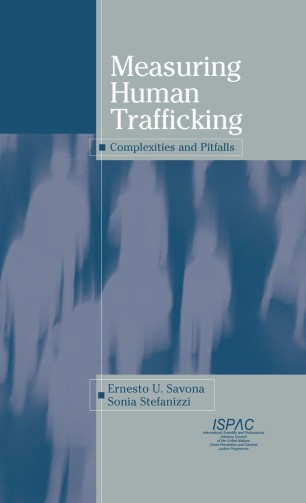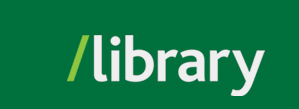Women and/or girls are the highest percentage of victims of human trafficking across the globe, except in North Africa and the Middle East (UNODC, 2021). Approximately 50% of people are trafficked for sexual exploitation and 38% for labour trafficking (UNODC, 2021). Other reasons for trafficking include forced marriage, organ donation, and others. The map below shows the flow of trafficked persons around the world.
Sources:
The first section gives an overview of the issue and contextualizes it within a human rights and historical framework. The second section provides the reader with more detailed, interdisciplinary information about trafficking. The third section, which contains a chapter written by a former FBI agent, focuses on the anti-trafficking movement and addresses international responses to the problem, as well as considerations for working with victims. Also available as a print book from UFV Library.

From labor trafficking in the U.S. agricultural sector to sex trafficking in Nigeria to debt bondage in the Southeast Asian construction sector to forced labor in the Thai seafood industry, Kara depicts the myriad faces and forms of slavery, providing a comprehensive grounding in the realities of modern-day servitude. Drawing on sixteen years of field research in more than fifty countries around the globe—including revelatory interviews with both the enslaved and their oppressors—Kara sets out the key manifestations of modern slavery and how it is embedded in global supply chains.
Human trafficking is a crime that undermines fundamental human rights and a broader sense of global order. It is an atrocity that transcends borders with some regions known as exporters of trafficking victims and others recognized as destination countries. Edited by three global experts and composed of the work of an esteemed panel of contributors, Also available as a print book from UFV Library.
The book argues that crime cannot be dealt with only by applying piecemeal tactics. Instead, it will require an organised professional, multi-disciplinary and multi-agency approach, calling for concerted, collaborative and participatory efforts of all stakeholders. All the essays included in this book are original works delving deeply into various forms of human trafficking. Also available as a print book from UFV Library.

This authoritative work examines key issues and debates on human trafficking, drawing on theoretical, historical and comparative material to inform the discussion of major trends. Consolidating current work on human trade debates, the text brings together key criminological and sociological literature on migration studies, gender, globalization, human rights, security, victimology, policing and control to provide the most complete overview available on the subject.
This book investigates counter-trafficking as a transnational field and tries to show how connected stances against a "global social problem" are produced internationally in general, and nationally in particular within the example of three countries which are defined with different positions according to the phenomenon: Ukraine as a "source country," Turkey as a "transit and destination country," Germany as a "destination country."

Human Trafficking is a growing transnational criminal phenomenon_conservative estimates put the total number of persons trafficked annually at two million. In this first in-depth study of human trafficking in Russia and Ukraine, scholars from the European, Siberian, and far-eastern parts of Russia offer groundbreaking analyses of the motivations behind and reactions to this horrifying trend. Also available from UFV Library as a print book.

Human trafficking is current and very topical, especially in relation to Eastern Europe. Emphasizes quantitative findings, whereas competitive books on the same subject matter have been qualitative and descriptive. Also available from UFV Library as a print book.

This book examines all forms of human trafficking globally, revealing the operations of the trafficking business and the nature of the traffickers themselves. Using a historical and comparative perspective, it demonstrates that there is more than one business model of human trafficking and that there are enormous variations in human trafficking in different regions of the world. Also available as a print book from UFV Library.
The UFV Library has a vast collection of print and electronic books and videos for students to use for their studies. Remember: when accessing resources off-campus, users will be prompted to enter their UFV credentials to gain access. For tips on coming up with a topic - please visit our Library Research: Starting Strong LibGuide. For more information about how to find online videos - please visit our Streaming Video Collections LibGuide.
[Note: We are working to improve access to our collections and revising our subject headings to be more respectful and inclusive. Please be aware that you may see certain words or descriptions in search results or library materials which reflect the author’s attitude or that of the period in which the item was created and may now be considered offensive.]
Example subject searches (click on the links to see the lists of related books and videos):
![]() Librarian's Tip! Use quotes "..." when searching for phrases. This technique tells the search to look for those letters in that exact order which will make your search more precise!
Librarian's Tip! Use quotes "..." when searching for phrases. This technique tells the search to look for those letters in that exact order which will make your search more precise!
Databases are collections of different types of sources (usually digital) such as:
Here are a few databases to browse when searching for resources related to human trafficking.
For more information on types of sources (including scholarly articles), please review our Evaluating Sources LibGuide and make sure to check your assignment instructions before your start your research to see what types of sources your professor has asked you to use for your project(s).
The following strategies can be useful to help you search for and choose an academic/scholarly research article
1. Analyze your topic statement for search terms
2. Connect different concepts with "AND"; connect similar (or synonymous) concepts with "OR" You also need to use quotation marks to search complete phrases.
e.g. Human Trafficking AND International Law
e.g. Human Trafficking OR Modern Slavery
3. Use limiters (options on the left or right side of the search results) to narrow your results list such as publication dates, peer-reviewed, and full text
4. Be sure to read the abstracts - they will often reveal enough "clues" to tell you if the article is relevant or not.
5. If you do not find articles that interest you, look at your results. See if there are new words or new search terms that you can use that will help you improve your search.
Users can look for videos from the library homepage, or go to one of the Library's video databases. For more information on finding videos please see our Streaming Videos LibGuide. See below for a sample of related videos:
© , University of the Fraser Valley, 33844 King Road, Abbotsford, B.C., Canada V2S 7M8

